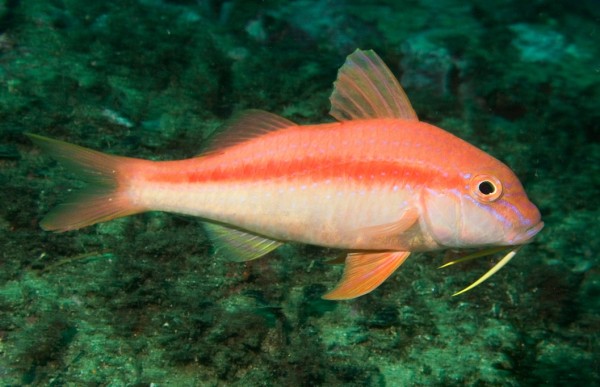
I take on a senseless internet meme and make it even more so – for science.
With the northern hemisphere days getting shorter, and the air getting crisper as autumn approaches, we reflect back on the summer soon passing. You may not have known, but this was the “Summer of the Goat” as christened by internet sites, and further blessed with countless video and photographic outpourings of humanity’s apparent love of goats. The cyber cuteosphere erupted with frolicking baby goats, bipedal goats, narcoleptic goats, goats with puppies, goats with British royalty, bleating goats singing along to the theme from Jurassic Park, and this was just the start. Though I certainly appreciate goats for their sublime comedic gestalt, that was certainly not my summer. As a marine biologist I had a very different summer – the Summer of the Goatfish.
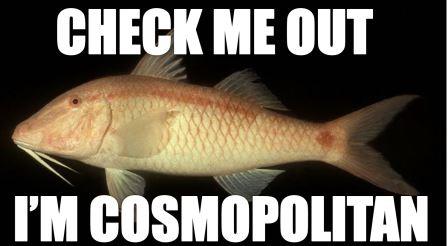
Goatfishes are found worldwide in shallow, warm waters, and as an ichthyologist with pathetic swimming skills, I’ve dog-paddled alongside them the shallows of the Gulf of California, waded with them in the Red Sea, and snorkeled among schools of them in Hawaii. This year I enjoyed them again in the Caribbean waters off Belize and the Cayman Islands, continuing my excitement of underwater fish-watching and reinforcing my admiration for these fishes, and at 55 species, that’s plenty to love.
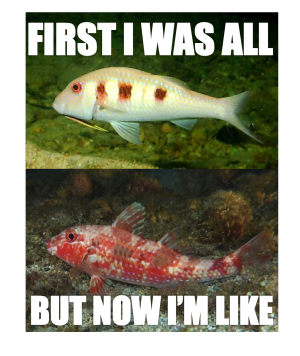
Colors and patterns seen in goatfish represent a broad range of hues and textures, made even more spectacular by the fact that they can change colors. Many species will assume different day and night, or active and resting colors (like your work clothes and jammies), a feature that initially confused early ichthyologists as to just how many of goatfish species there actually were. Foraging groups of goatfish may hijack a school of fish like snappers, changing their color to match that of the other fish and blending unnoticed by the goatfishes’ smaller prey or larger predators.
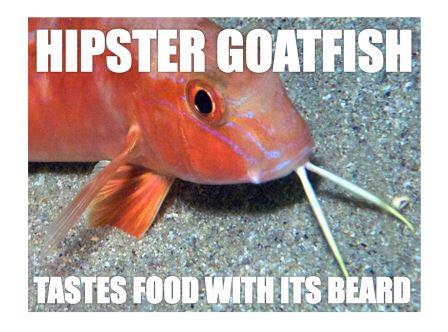
Showing virtually no resemblance to their horned, hoofed, and smellier terrestrial namesakes, the pair of whisker-like barbels goatfish have on their chin vaguely resembled the scraggly throat-beard goats have (where the term ‘goatee’ came from, obviously) led earlier fisherfolk to dub these critters ‘goatfish’. While the beard of a goat (or the goatee of a hipster) serves no practical purpose, these goatfish whiskers are filled with chemosensory receptors that allow them to taste around for buried food as they comically tickle the soft sediments with these finger-like extensions.
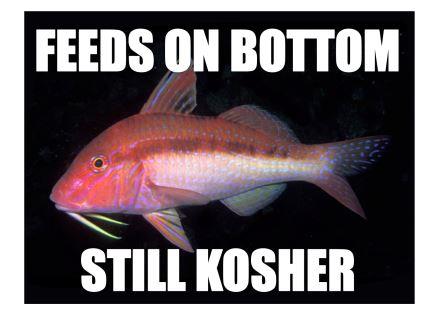
At the first sense of food, goatfish ram their mouth into the sand, gulp a package of silt & food, then pass the load through their gills where sand exits and larger delicious bits of seafood are gulped down. Some fish forage individually, while others form large schools that move like an army of minesweepers over the ocean bottom uncovering worms, crabs, shrimp, and other invertebrates. Even though they are truly bottom-feeders eating other scavengers, they are still listed as a Kosher fish.
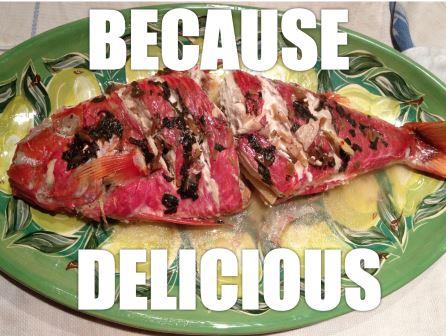
Over the centuries goatfish have been harvested as food. Easily caught by hook or net from shore, they were, and in many areas, still are, a common mainstay of seaside cultures. Early Greeks saw eating a goatfish as a sign as being an epicurean elite, and these fish were popular among banquets of the Roman ruling class, with high bounties being paid for especially large specimens. Hawaiian islanders esteem this fish today, and in early times they raised certain species of goatfish in ponds to supply the ruling Ali’I. Goatfish are caught by the tens of millions today in largely unregulated fisheries, both commercially and recreationally, and little data exist on just how much are yanked from the sea. In the Australian state of New South Wales for example, between 20-30 metric tons are hauled in each year. That’s a lot of goatfish. But for me the joy lies not in eating them, but in how they forage, with a serious look on their faces while comically wriggling their little goatfish beard in the sand for food. That’s just as adorable as any goat tromping through playground rides. Enjoy the videos below:

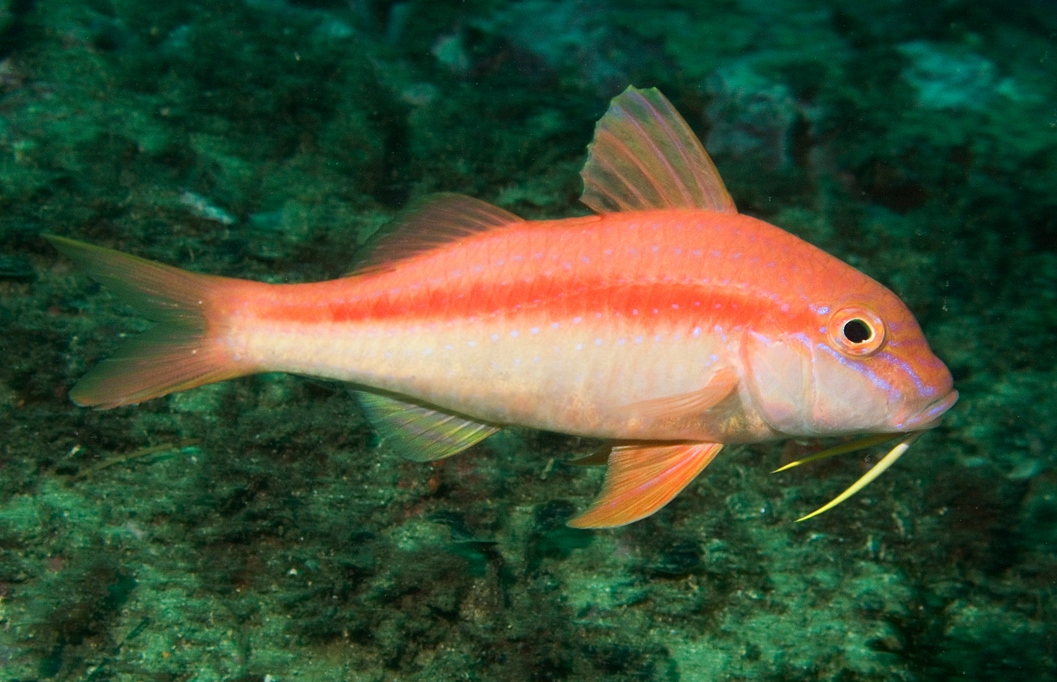


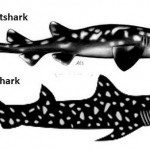



Neat! I hadn’t thought of goatfish for years — they are just as much fun as I remembered.